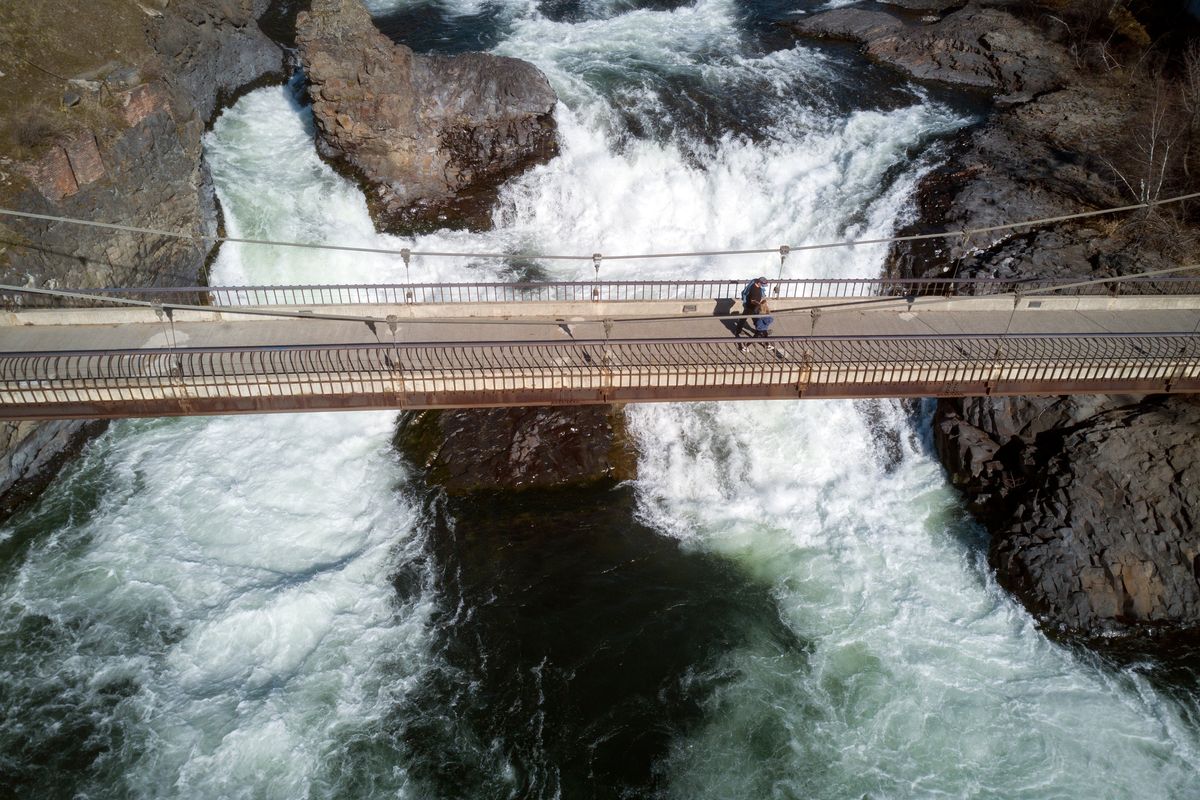In court ruling, EPA agrees to set PCB standard in Spokane River by 2024

Federal environmental authorities have agreed to a September 2024 deadline to set a target for reduction of cancer-linked chemicals released into the Spokane River.
A federal judge in Seattle on Friday signed off on a legal agreement between the Environmental Protection Agency and several conservation groups locked in a legal battle for a decade over polychlorinated biphenyls, or PCBs, in the waterway. The agreement requires the EPA to establish a total maximum daily load for the chemicals, a legacy pollutant that enters the Spokane River through wastewater discharged by the city of Spokane and Spokane County, as well as the Liberty Lake Sewer and Water District, Kaiser Aluminum and Inland Empire Paper Co., in addition to other runoff sources.
Jerry White Jr., executive director of Spokane Riverkeeper, said the agreement would establish specific limits for each of the entities releasing the chemicals into the river, a provision that had been lacking from previous cleanup approaches approved by the courts.
“It says, everyone’s got to go on a diet here,” said White, whose nonprofit is not a party in the lawsuit but advocates for river quality.
Studies have linked PCBs to certain types of cancer, and several conservation groups have expressed concern the chemicals are absorbed by fish that could then sicken those who rely on them as a staple of their diet. After the Sierra Club and the Center for Environmental Law & Policy filed a lawsuit in 2011, the Spokane Tribe of Indians sought to intervene two years later because of their water rights and use of the river for fishing and ceremonial purposes. The tribe sought to force the EPA to create a pollution limit for the chemicals.
Local governments and river users formed the Spokane River Regional Toxics Task Force as a way to establish water quality standards for PCBs during the litigation. But in March 2021, the tribe once again filed a complaint in response to state regulators’ decision to halt discussions of a standard due to pending rulemaking by the EPA and associated lawsuits.
Friday’s agreement starts the clock ticking on a process that should have taken place years ago, said Ted Knight, an attorney representing the Spokane Tribe in the lawsuit.
“The tribe is pleased that EPA has decided to prepare the TMDL that needed to be developed for many years,” he said, referring to the acronym for total maximum daily load, the limit for how much PCBs will be allowed to be released in the river.
The deadline of Sept. 30, 2024, means that the values will be determined by President Joe Biden’s administration prior to the election that November, which could flip control of the agency. The underlying water quality standard for PCBs, a different calculation that decides what is a healthy and safe concentration of PCBs than the one that determines the amount allowed to be discharged by a single entity, has been thrown into confusion in part due to changes in the White House. President Barack Obama’s EPA set one standard for PCBs, at seven parts per quadrillion, that was reversed under President Donald Trump to 170 parts per quadrillion.
The discrepancy prompted a lawsuit from Washington Attorney General Bob Ferguson and the state Ecology Department. That lawsuit has been put on hold as the EPA re-evaluates the underlying water quality standard to determine whether it will return to the more stringent Obama-era standard or the one promulgated by Trump’s EPA.
Still, the Ecology Department is working on permits for each of the five major dischargers. Doug Krapas, environmental manager for Inland Empire Paper, said the resolution of the lawsuits, permitting process and rule-making will all have an effect on the company’s decision whether to continue recycling paper.
“One of the things we’d have to do is eliminate recycling,” said Krapas, noting that the EPA carves out certain manufacturing businesses from its ban on PCBs instituted in 1979, including the types of pigments and dyes found in paper products. “All of that paper has to go somewhere, whether to the landfill or the Waste-to-Energy plant.”
The facility does not create PCBs; rather it takes in material for recycling that includes the chemicals, Krapas emphasized. The plant’s own filtration system, recently updated, eliminates 99.999% of the PCBs in products for recycling, which are then destroyed on-site, Krapas said.
Inland Empire Paper Co. is a subsidiary of the Cowles Co., which also publishes The Spokesman-Review.
The city of Spokane, Liberty Lake Sewer & Water District and Spokane County have upgraded their water treatment plants in an effort to reduce the PCBs entering the river through treated water. Kaiser Aluminum’s Trentwood plant is in the process of developing a new system to remove PCBs from its wastewater.
While those investments have been made under the current regulatory system, the numbers provided by the EPA will add certainty to the process of establishing a safe standard in the river, White said.
“Legal compliance requires figuring problems out, and then they get figured out,” he said. “This, we hope, provides a good incentive for all parties to engage and make substantive changes.”
The order signed by U.S. District Court Judge Barbara Rothstein requires updates from the EPA every 180 days through completion of the pollution limits.
Bill Dunbar, an EPA spokesman, said this week the agency will be accepting public comment on the limits prior to approval.